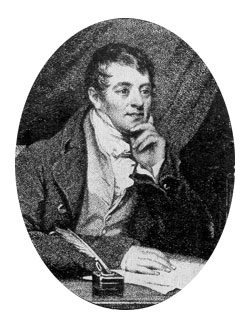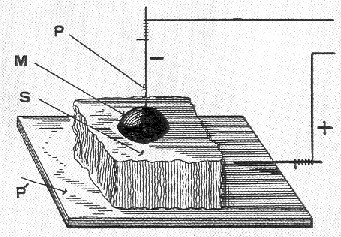
|
| Humphry Davy (1778-1829) was 19 when he began studying chemistry after reading Antoine Lavoisier’s Traite Elementaire published eight years earlier. Within five years he was appointed Professor of Chemistry at The Royal Institution in London. Davy’s first scientific work was carried
out at Dr.Beddoes’ Pneumatic Institute. Here he investigated
the possible therapeutic value of inhaling various gases, using
himself as a guinea pig. Since nitric oxide and carbon monoxide
were among the gases studied, it is surprising he survived to write
at length on the physiological and psychological effects of nitrous
oxide (laughing gas). At the Royal Institution Davy exploited the recently discovered voltaic pile to lay the qualitative foundations of electrochemistry. In a “capital experiment”, he isolated elemental potassium which was soon followed by sodium, barium, calcium, strontium and magnesium. Since Davy later isolated crude boron and silicon, he had a hand in the discovery of almost 10 percent of the elements in the periodic table. For his achievements, Davy was awarded a gold medal from Napoleon. Late in 1813, Davy set out on an 18 month tour
of Europe accompanied by young Michael Faraday. Though neither then
realized it, Davy’s star was beginning to set while Faraday’s
was soon to rise. Faraday was to succeed Davy at The Royal Institution.
Some have unkindly suggested that Davy’s greatest discovery
was Michael Faraday. Strictly as a chemist, Davy was the greater
of the two. As a natural phiolosopher, Faraday was incomparable. |













